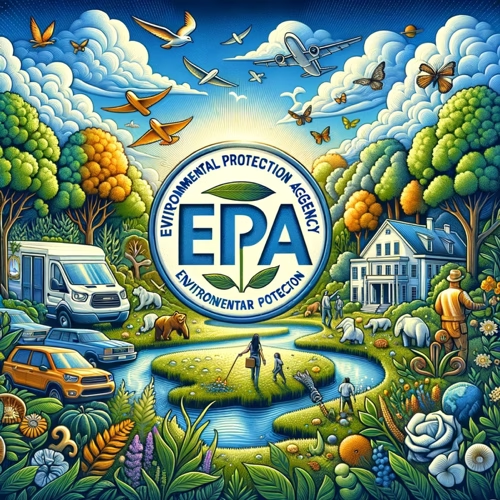Bra podd
Sveriges mest populära poddar

Environmental Protection Agency (EPA) News
EPA's Enforcement Shift Raises Concerns Over Environmental Justice and Regulatory Rollbacks
3 min • 14 april 2025
This week, significant changes from the Environmental Protection Agency (EPA) are making waves. In a sweeping memorandum issued on March 12, 2025, the EPA announced a major shift in its enforcement priorities, emphasizing energy sector stability, deregulation, and a rollback of Environmental Justice considerations. These moves align with Administrator Lee Zeldin's "Powering the Great American Comeback Initiative," which seeks to prioritize economic growth and minimize regulatory burdens.
The EPA has explicitly directed its enforcement efforts away from actions that could disrupt energy production, such as exploration or coal-fired power generation, unless there’s a clear and immediate threat to public health. For example, enforcement related to coal ash at active plants will now focus solely on imminent risks to human health rather than broader compliance with performance standards. Methane emissions from oil and gas facilities have also been deprioritized, marking a sharp departure from previous administration policies. These changes are expected to reduce enforcement in these areas, with significant implications for industries and state regulators.
In a controversial move, the EPA has removed Environmental Justice as a key consideration in enforcement. EJSCREEN, a tool used to assess the impact of pollution on disadvantaged communities, has been disabled, and related data will no longer influence decision-making. The agency claims this refocus will streamline operations, but critics worry it may exacerbate pollution in vulnerable communities already facing higher environmental risks.
Business leaders in the energy sector have welcomed the changes, arguing they will provide greater certainty and reduce operational disruptions. However, environmental advocates warn of potential long-term public health risks and a growing gap in addressing community-level pollution concerns. States may face increased pressure to fill enforcement gaps left by the federal government.
Looking ahead, the EPA plans to implement further regulatory refinements under the Toxic Substances Control Act, though reduced staff and funding may delay these efforts. Public comments on proposed rules for hazardous chemical management and water pollution control are due later this month, offering citizens a chance to share their input.
For more information or to submit feedback, visit the EPA’s official website. Stay tuned for updates on how these policy shifts unfold and their impact on communities, businesses, and the environment nationwide.
The EPA has explicitly directed its enforcement efforts away from actions that could disrupt energy production, such as exploration or coal-fired power generation, unless there’s a clear and immediate threat to public health. For example, enforcement related to coal ash at active plants will now focus solely on imminent risks to human health rather than broader compliance with performance standards. Methane emissions from oil and gas facilities have also been deprioritized, marking a sharp departure from previous administration policies. These changes are expected to reduce enforcement in these areas, with significant implications for industries and state regulators.
In a controversial move, the EPA has removed Environmental Justice as a key consideration in enforcement. EJSCREEN, a tool used to assess the impact of pollution on disadvantaged communities, has been disabled, and related data will no longer influence decision-making. The agency claims this refocus will streamline operations, but critics worry it may exacerbate pollution in vulnerable communities already facing higher environmental risks.
Business leaders in the energy sector have welcomed the changes, arguing they will provide greater certainty and reduce operational disruptions. However, environmental advocates warn of potential long-term public health risks and a growing gap in addressing community-level pollution concerns. States may face increased pressure to fill enforcement gaps left by the federal government.
Looking ahead, the EPA plans to implement further regulatory refinements under the Toxic Substances Control Act, though reduced staff and funding may delay these efforts. Public comments on proposed rules for hazardous chemical management and water pollution control are due later this month, offering citizens a chance to share their input.
For more information or to submit feedback, visit the EPA’s official website. Stay tuned for updates on how these policy shifts unfold and their impact on communities, businesses, and the environment nationwide.
Senaste avsnitt
00:00 -00:00